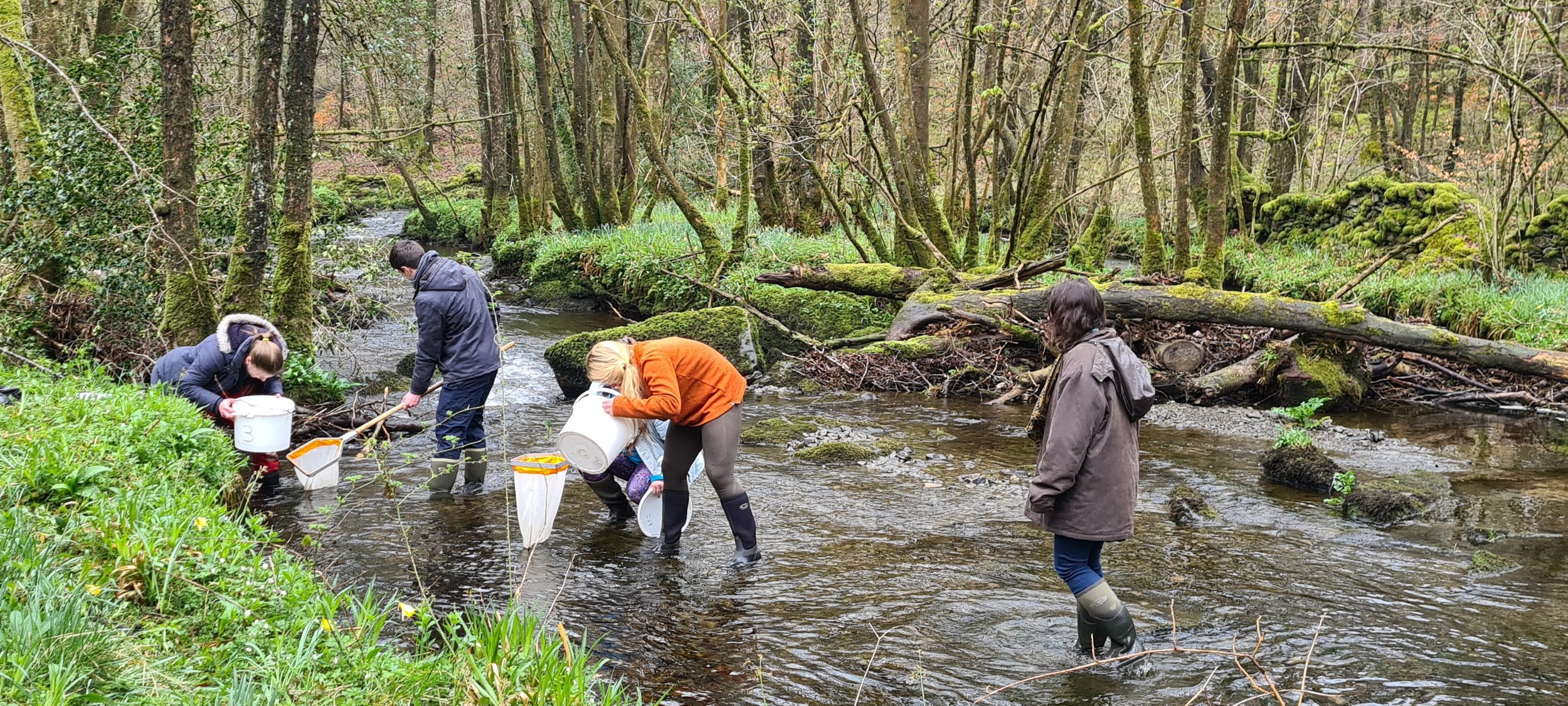
Riverfly Monitoring Initiative (RMI)
Anglers and local community groups are often seen as natural guardians of the river environment, because they are in an ideal position to monitor the health of the watercourses they fish in and live near. The Riverfly Monitoring Initiative (RMI — also known as the Anglers’ Riverfly Monitoring Initiative, ARMI) has been pioneered by the Riverfly Partnership to provide a simple, standardised monitoring technique which groups can use to detect any severe perturbations in river water quality, and put them in direct communication with their local ecological contact at the Environment Agency (EA)/Scottish Environment Protection Agency (SEPA)/National Resources Wales (NRW)/Northern Ireland Environment Agency (NIEA).
Used alongside routine monitoring by the EA/SEPA/NRW/NIEA, this RMI scheme ensures that water quality is checked more widely, and remedial action is taken at the earliest opportunity if any severe perturbations are detected. This active monitoring also acts as a deterrent to incidental polluters. Successful schemes are underway in catchments across the UK, with data stored on our database, Cartographer. Verified data is freely available to view and download under the terms of the Open Government Licence.
The Riverfly Partnership receives funding to coordinate the Riverfly Monitoring Initiative in England from fishing licence sales and a Water Environment Improvement Fund grant through the collaborative agreement with the EA. The FBA secured a grant in late 2022 from Esmée Fairbairn Foundation to further develop the programme.
History of the RMI
The Riverfly Partnership Monitoring Initiative is a result of collaborations between:
The Riverfly Recording Schemes for Ephemeroptera (Craig Macadam) and Trichoptera (Ian Wallace of Liverpool Museum), the latter of which was established in 1970's;
Dr Cyril Bennett's pioneering monitoring work on the River Wey (1980's onwards). Similar work was taking place on the river Don by Stuart Crofts (first published in 2000), and on rivers in south east Wales by Dai Roberts, amongst others;
Dr Cyril Bennett, Warren Gilchrist and colleagues from the John Spedan Lewis Trust for the Advancement of the Natural Science who deliver riverfly identification courses at the Leckford Estate on the River Test;
Steve Brooks and Peter Barnard — entomologists at The Natural History Museum, London, who ran entomology courses for anglers in the 1980s.
The collaboration was brought together in 2002 as a Natural History Museum / Natural England Partnership Project. The 2004 Riverfly Conference, Riverflies — a beacon of environmental quality, which led to the establishment of the Riverfly Partnership, demonstrated overwhelming support of the monitoring initiative. The initiative was endorsed by the Salmon and Trout Association, and led to a pilot phase in collaboration with the EA, with the associated publication developed with the Field Studies Council (FSC).
In 2006, the Riverfly Partnership trialled the Test Version of the publication with the EA, in association with Ryedale Anglers, Taunton Fly Fishers, Eden Rivers Trust, Rhymney and Sirhowy Monitoring Group and Frensham Fly Fishers, amongst others. In early 2007, the Scottish Environment Protection Agency was approached and officially joined the initiative.
The national launch of the Anglers’ Monitoring Initiative took place in March 2007 at the second National Riverfly Conference, How good is your river?, which was held at the Natural History Museum, London.
The Riverfly Partnership, in collaboration with local organisations, continues to lead the initiative in working to protect the water quality of watercourses, and conserving and furthering the understanding of riverfly populations.
Other Riverfly core projects
-

Extended Riverfly
-

Urban Riverfly
Images on this page: Trine Bregstein, Jonathan Plimmer (Flickr), Sharon Flint (Flickr).

